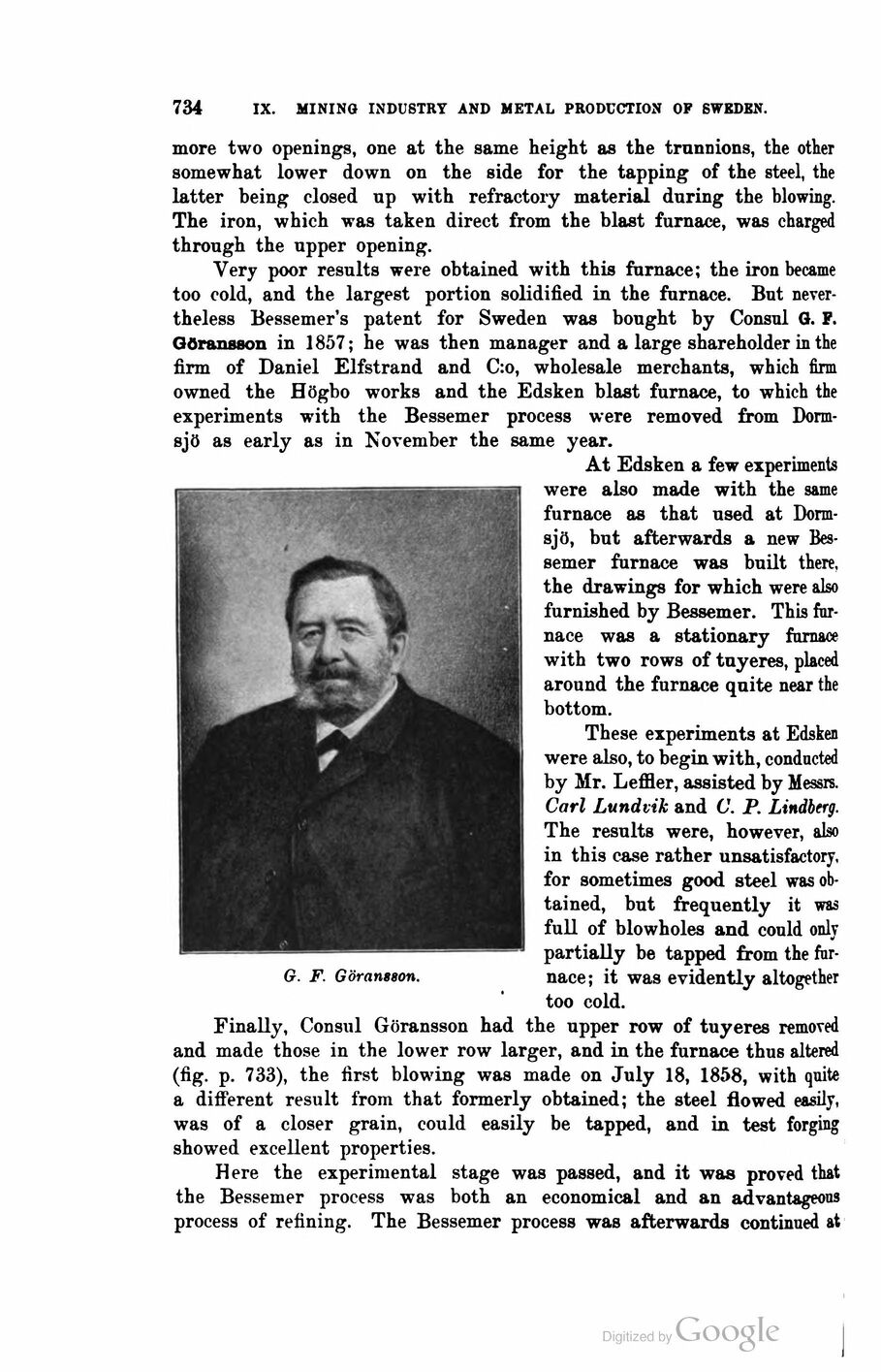
Full resolution (JPEG) - On this page / på denna sida - Second part - IX. Mining Industry and Metal Production - 2. The Iron and Steel Industry. By the late Prof. J. G. Wiborgh - Ingot iron (Steel)

<< prev. page << föreg. sida << >> nästa sida >> next page >>
Below is the raw OCR text
from the above scanned image.
Do you see an error? Proofread the page now!
Här nedan syns maskintolkade texten från faksimilbilden ovan.
Ser du något fel? Korrekturläs sidan nu!
This page has never been proofread. / Denna sida har aldrig korrekturlästs.
734-
ix. mining industry and metal production op sweden.
more two openings, one at the same height as the trunnions, the other
somewhat lower down on the side for the tapping of the steel, the
latter being closed up with refractory material during the blowing.
The iron, which was taken direct from the blast furnace, was charged
through the upper opening.
Very poor results were obtained with this furnace; the iron became
too cold, and the largest portion solidified in the furnace. But
nevertheless Bessemer’s patent for Sweden was bought by Consul G. F.
Göransson in 1857; he was then manager and a large shareholder in the
firm of Daniel Elfstrand and C:o, wholesale merchants, which firm
owned the Högbo works and the Edsken blast furnace, to which the
experiments with the Bessemer process were removed from
Dorm-sjö as early as in November the same year.
At Edsken a few experiments
were also made with the same
furnace as that used at
Dorm-sjö, but afterwards a new
Bessemer furnace was built there,
the drawings for which were also
furnished by Bessemer. This
furnace was a stationary furnace
with two rows of tuyeres, placed
around the furnace quite near the
bottom.
These experiments at Edsken
were also, to begin with, conducted
by Mr. Leffler, assisted by Messrs.
Carl Lundvik and C. P. Lindberg.
The results were, however, also
in this case rather unsatisfactory,
for sometimes good steel was
obtained, but frequently it was
full of blowholes and could only
partially be tapped from the
far-nace; it was evidently altogether
too cold.
Finally, Consul Göransson had the upper row of tuyeres removed
and made those in the lower row larger, and in the furnace thus altered
(fig. p. 733), the first blowing was made on July 18, 1858, with quite
a different result from that formerly obtained; the steel flowed easily,
was of a closer grain, could easily be tapped, and in test forging
showed excellent properties.
Here the experimental stage was passed, and it was proved that
the Bessemer process was both an economical and an advantageous
process of refining. The Bessemer process was afterwards continued at
G. F. Göransson.
<< prev. page << föreg. sida << >> nästa sida >> next page >>